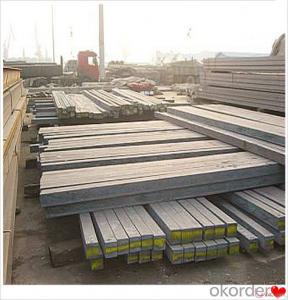Carbon Steel Billet 3SP 5SP 20MnSi New design Steel Billet
- Loading Port:
- Dalian
- Payment Terms:
- TT OR LC
- Min Order Qty:
- 100 m.t.
- Supply Capability:
- 50000 m.t./month
OKorder Service Pledge
OKorder Financial Service
You Might Also Like
Carbon Steel Billet 3SP 5SP 20MnSi New design Steel Billet
Description
Reference Price:$260/ton Mn 0.3%-0.6%
Rectangular billet continuous casting billet and mainly general carbon steel, low carbon low silicon cold-rolled material, high quality carbon structural steel, high strength low alloy steel, special steel, etc.
The billet is mainly divided into two kinds from the shape:
Slab: cross section width and height of the ratio of the larger, mainly used for rolling plate.
Billet: equal cross section width and height, or a huge difference, mainly used for rolling steel, wire rod. ,
Steel billets have distinct characteristics as compared with already furnished steel bars and products. Billets have a specific grain structure, which enables the metal to be processed more intricately. Steel billets are also known for their malleability and ductility, especially when exposed to varying temperatures during shaping and molding.
Processing of Steel Billet
Steel billets are considered fresh and raw, and they must undergo a series of manufacturing processes before they can be used for various purposes. Billets are made by means of freezing molten liquid, and are later exposed to extremely low temperatures in order to allow the metal to take shape and solidify in chemical structure. The temperature manipulates the metal's physical properties, and tones its strength and durability. The subsequent processes provide the metal's curved mold design so that it can fit the allotted space provided by other machines, which complete the finishing procedures.
Images
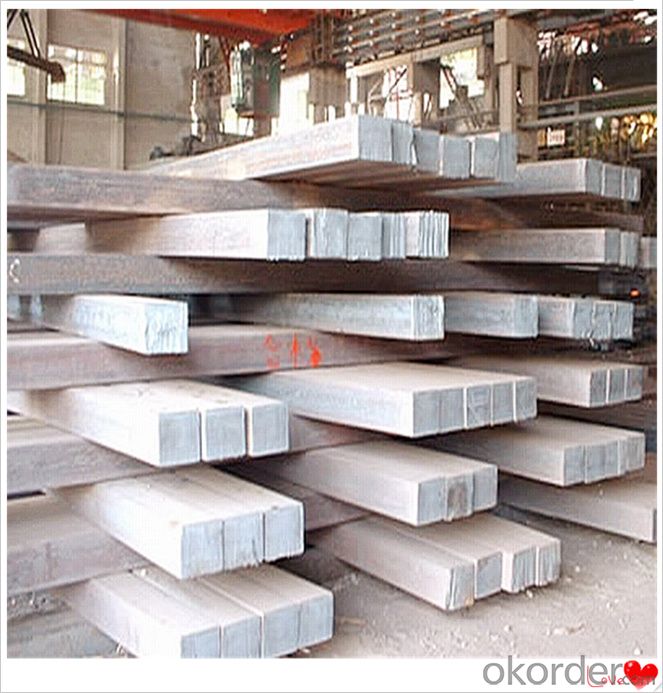
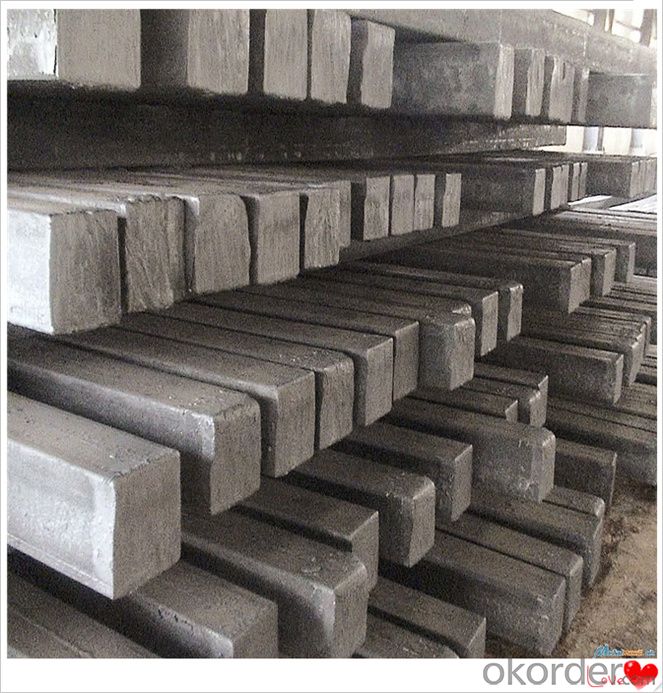
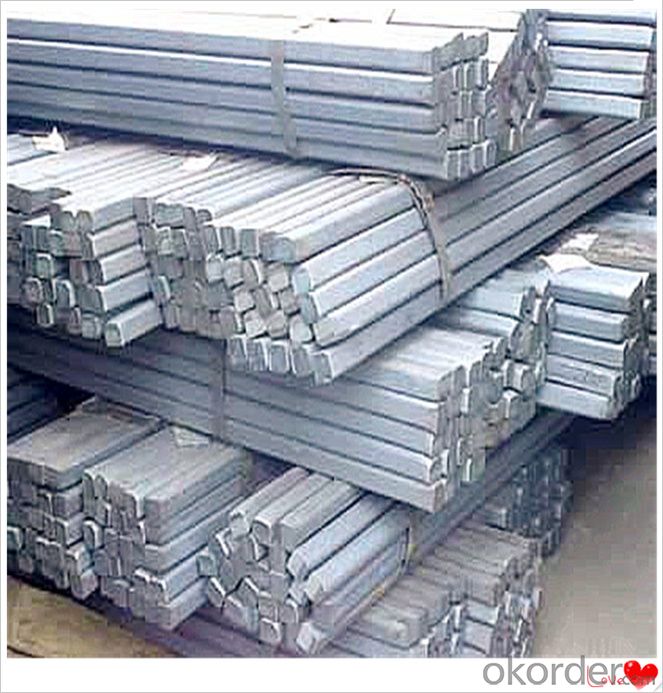
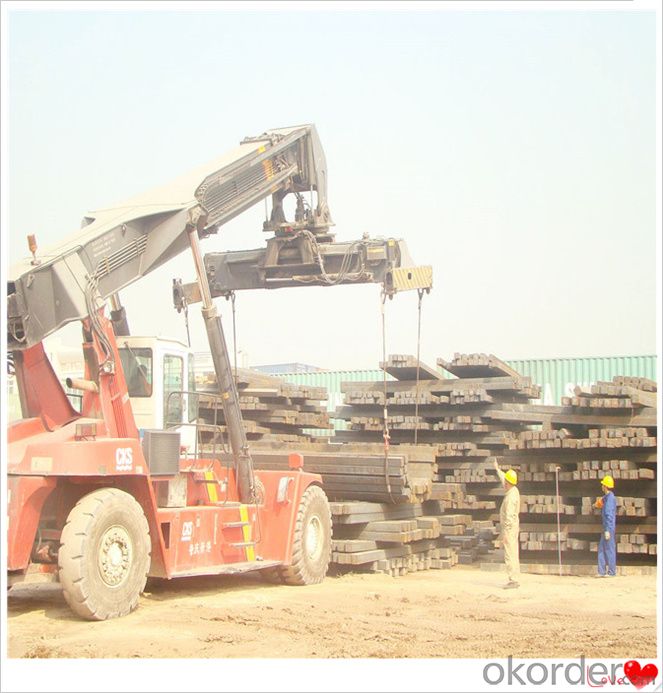
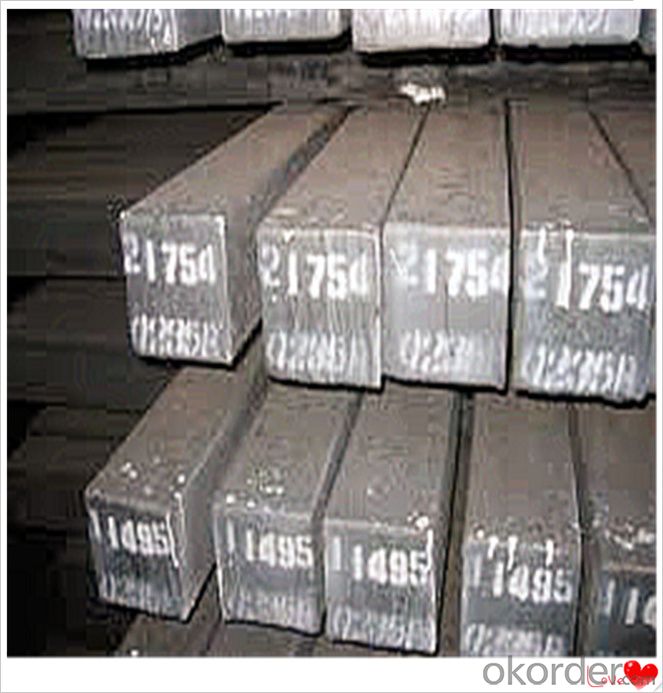
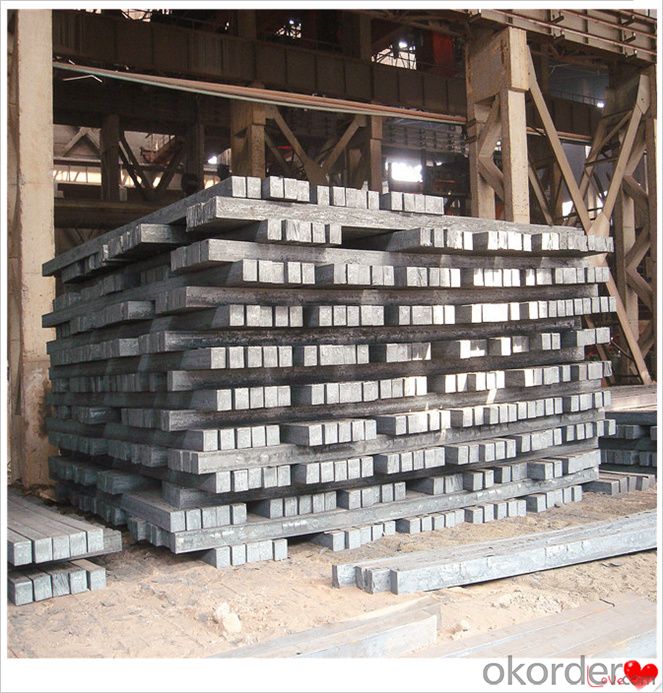
Technical Data
Size:100*100,120*120,150*150,130*130
Mn: 0.3%-0.6%
C: 1%
Cr:0.1%
Packaging
cargo ship or container
usually container price will add 15USD per ton
RFQ
We have organized several common questions for our clients,may help you sincerely:
1) How about your company?
A world class manufacturer & supplier of castings forging in carbon steel and alloy steel,is one of the large-scale professional investment casting production bases in China,consisting of both casting foundry forging and machining factory. Annually more than 8000 tons Precision casting and forging parts are exported to markets in Europe,America and Japan. OEM casting and forging service available according to customer’s requirements.
2) How to guarantee the quality of the products?
We have established the international advanced quality management system,every link from raw material to final product we have strict quality test;We resolutely put an end to unqualified products flowing into the market. At the same time, we will provide necessary follow-up service assurance.
3) How long can we receive the product after purchase?
In the purchase of product within three working days, We will arrange the factory delivery as soon as possible. The pecific time of receiving is related to the state and position of customers.Commonly 7 to 10 working days can be served.
4)Do you have your own QC department?
Yes, we have, our QC department will inspect the goods during the process of mass production and after completion of production.
hot sale!!! steel billets/ mild steel bar/ billet steel
(1): High quality steel with reasonable price.
(2): Wide excellent experiences with after-sale service.
(3): Every process will be checked by responsible QC which insures every product's quality.
(4): Professional packing teams which keep every packing safely.
(5): Trial order can be done in one week.
(6): Samples can be provided as your requirements.
If you are interested in our products, please don't hesitate to contact me.
Your any inquiry will be appreciated and we will offer you a rock-bottom price.
- Q:How are steel billets used in the production of valves?
- Steel billets are used in the production of valves as a raw material. They are melted and then shaped into the desired shape and size of the valve through various manufacturing processes such as forging, machining, and heat treatment. The steel billets provide the necessary strength and durability required for valves to withstand high pressure and temperature conditions.
- Q:How are steel billets cast into shape?
- The process of continuous casting is used to shape steel billets. In this process, molten steel is poured into a copper mold that is cooled by water. The mold is in the shape of a billet, and as the steel is poured, it starts to solidify along the mold's walls. To ensure complete solidification, a water spray is employed at the bottom of the mold, rapidly cooling the steel. As the steel solidifies, it is continuously pulled out of the mold either by a set of rollers or a chain conveyor. Once the billet has solidified entirely, it is cut into desired lengths using a high-speed torch or saw. These cut billets are then transported to the next stage of the steel manufacturing process, such as rolling or forging, where they are further shaped into the final product. Continuous casting enables the production of steel billets with consistent cross-sectional shapes and sizes. This efficient process generates high-quality steel products while minimizing waste.
- Q:How are steel billets used in the manufacturing of machinery?
- Due to their versatility and strength, steel billets play a crucial role in the production of machinery. These cylindrical metal bars, typically made from carbon or alloy steel, serve as the raw material for various machine parts and components. One common application of steel billets in machinery manufacturing involves using them to create machine frames and structures. The billets are heated and then hot-rolled or forged to achieve the desired shape. This ensures that the final product possesses the necessary strength and durability to withstand the mechanical stresses it will encounter during operation. Moreover, steel billets are utilized in the fabrication of machine components like gears, shafts, and axles. These parts require high tensile strength and resistance to wear and deformation, making steel billets the ideal material choice. Machining or forging the billets into the desired shape guarantees precise dimensions and tolerances are met. Furthermore, steel billets find application in the production of machine tools, which are vital for shaping and machining various materials. By using steel billets as the base material, machine tools can effectively handle heavy loads, provide stability, and ensure precision in the manufacturing processes. In conclusion, steel billets are essential in machinery manufacturing due to their strength, durability, and versatility. They enable the production of machine frames, components, and tools that can effectively perform their intended functions. The ability to shape, machine, and forge steel billets into various forms allows for the creation of high-quality machinery.
- Q:How are steel billets used in the manufacturing of power transmission equipment?
- Steel billets are used in the manufacturing of power transmission equipment as they serve as the raw material for various components such as gears, shafts, and housings. These billets are forged, machined, and shaped into the required sizes and shapes to create strong and durable parts that can withstand the high loads and pressures involved in power transmission. Overall, steel billets play a vital role in ensuring the reliability and performance of power transmission equipment.
- Q:Are steel billets used in the manufacturing of oil and gas pipelines?
- Yes, steel billets are commonly used in the manufacturing of oil and gas pipelines. These billets are typically formed into seamless or welded pipes, which are then used to transport oil and gas over long distances. The high strength and durability of steel make it an ideal material for withstanding the harsh conditions encountered in the oil and gas industry.
- Q:How are steel billets used in the construction of bridges?
- Due to their exceptional strength and durability, steel billets play a crucial role in bridge construction. These cylindrical pieces of raw steel are heated and shaped into various structural components, such as beams, columns, and girders, which serve as the foundation of bridge structures. The initial step in utilizing steel billets for bridge construction involves heating them in a furnace to make them malleable. Once the desired temperature is reached, the billets are passed through a series of rollers to shape them into the required sections. This process, referred to as hot rolling, guarantees that the steel achieves the necessary strength and structural integrity. Following this, the shaped steel billets undergo further processing and fabrication to form different bridge components. For example, beams are created by cutting and welding steel billets together to form long, horizontal members that bear the weight of the bridge deck. These beams are designed to withstand heavy loads and provide stability to the entire structure. On the other hand, columns are vertical members that transfer the load from the bridge deck to the foundations. Steel billets are shaped and joined together to construct these load-bearing columns, ensuring they possess the required strength to endure compression forces. Girders also play a vital role in bridge construction, serving as horizontal supports that span across the width of the bridge. Steel billets are shaped into girders, which are then fabricated and connected to the bridge's piers or abutments. These girders provide the necessary strength to evenly distribute the weight of the bridge deck. Aside from their strength, steel billets offer several advantages in bridge construction. They possess a high resistance to corrosion, guaranteeing the durability and longevity of the bridge structure. Additionally, steel billets are highly versatile, allowing engineers to create various shapes and sizes, enabling the design of bridges that meet specific project requirements. Overall, steel billets are extensively utilized in bridge construction due to their strength, durability, and versatility. They form the foundation of bridge structures, providing the necessary support and stability to ensure the safe and efficient transportation of people and goods.
- Q:How does the carbon content affect the properties of a steel billet?
- The carbon content in a steel billet has a significant impact on its properties. Generally, steel is an alloy made primarily of iron and carbon. The carbon content determines the steel's hardness, strength, and other mechanical properties. Low carbon steel, also known as mild steel, typically contains less than 0.3% carbon. It is relatively soft, malleable, and easy to work with. Low carbon steel is often used for applications that require good formability, such as construction materials, automotive parts, and household appliances. Medium carbon steel contains carbon content ranging from 0.3% to 0.6%. It offers improved strength and hardness compared to low carbon steel. Medium carbon steel is commonly used in applications requiring higher load-bearing capacity, such as gears, shafts, and tools. High carbon steel, with carbon content exceeding 0.6%, is known for its exceptional strength and hardness. It is used in applications that require high resistance to wear, such as cutting tools, springs, and high-strength wires. However, high carbon steel tends to be more brittle and less ductile compared to low and medium carbon steels. In addition to influencing mechanical properties, carbon content affects the steel's ability to be heat treated. Low carbon steel cannot be hardened through heat treatment, while medium and high carbon steels can be heat treated to achieve desired hardness and strength. It is important to note that other alloying elements, such as manganese, chromium, and nickel, can be added to steel to further enhance its properties. However, carbon content remains a critical factor in determining the overall performance of a steel billet.
- Q:What is the size and shape of steel billets?
- Steel billets come in a variety of sizes and shapes, depending on their intended use. Generally, they are rectangular in shape and can range in size from small to large dimensions. The length of a billet can vary from several inches to several feet, while the width and height can also vary accordingly. These dimensions are determined by the specific requirements of the steel manufacturing process and the desired end product. Additionally, steel billets can also be customized to have specific shapes, such as square or round, to cater to different production needs.
- Q:How are steel billets used in the manufacturing of chemical processing equipment?
- Steel billets are an essential component in the manufacturing of chemical processing equipment. These billets serve as the raw material that undergoes various processes to transform into the final products required in chemical processing plants. Firstly, steel billets are used to produce high-quality steel plates that form the structural framework of chemical processing equipment. These plates are cut, shaped, and welded together to create vessels, reactors, and storage tanks. The strength and durability of steel make it an ideal choice for containing corrosive chemicals and withstanding high pressures and temperatures. Additionally, steel billets are also utilized in the production of pipes and fittings used in chemical processing plants. These billets are heated and passed through a series of rollers to form seamless or welded pipes. The resulting pipes are then further processed and fabricated to meet specific requirements such as corrosion resistance, heat resistance, and pressure ratings. Furthermore, steel billets are used to manufacture various components of chemical processing equipment, including valves, flanges, and other fittings. These components play a crucial role in controlling the flow of chemicals, regulating pressure, and connecting different parts of the processing system. Steel billets are machined, forged, or cast to create these components, ensuring their strength, reliability, and resistance to chemical corrosion. Overall, steel billets are an integral part of the manufacturing process for chemical processing equipment. Their versatility, strength, and resistance to corrosion make them the preferred choice for constructing the structural framework, pipes, and fittings required in chemical processing plants. By utilizing steel billets, manufacturers can ensure the reliability, safety, and longevity of the equipment used in the chemical industry.
- Q:How are steel billets used in the manufacturing of construction formwork?
- Steel billets are an essential component used in the manufacturing of construction formwork. Formwork refers to the temporary or permanent molds or structures used to hold and support freshly poured concrete until it sets and hardens. Steel billets, which are semi-finished steel products, are used as the raw material for creating the formwork. These billets are typically made by casting molten steel into a rectangular or square shape and then allowing it to cool and solidify. The resulting billets are then further processed to create the specific formwork components. The steel billets are first cut into smaller sections according to the desired dimensions of the formwork. These sections are then shaped and welded together to form the framework of the formwork. The billets provide the necessary strength and durability to withstand the weight of the concrete and any external forces exerted during construction. Once the framework is completed, additional components such as panels, braces, and tie rods are attached to it, also made from steel billets. These components provide stability and help distribute the load evenly across the formwork. Steel billets are the preferred material for constructing formwork due to their high strength-to-weight ratio and excellent resistance to corrosion. They can withstand the pressure exerted by the concrete during pouring and curing, ensuring the formwork remains intact and stable. Additionally, steel billets can be easily molded and shaped into various configurations, allowing for flexibility and customization in formwork design. In summary, steel billets play a crucial role in the manufacturing of construction formwork. They provide the necessary strength, durability, and stability required to support freshly poured concrete until it sets and hardens. By utilizing steel billets, formwork manufacturers can create robust and reliable structures that contribute to efficient and safe construction processes.
1. Manufacturer Overview |
|
|---|---|
| Location | |
| Year Established | |
| Annual Output Value | |
| Main Markets | |
| Company Certifications | |
2. Manufacturer Certificates |
|
|---|---|
| a) Certification Name | |
| Range | |
| Reference | |
| Validity Period | |
3. Manufacturer Capability |
|
|---|---|
| a)Trade Capacity | |
| Nearest Port | |
| Export Percentage | |
| No.of Employees in Trade Department | |
| Language Spoken: | |
| b)Factory Information | |
| Factory Size: | |
| No. of Production Lines | |
| Contract Manufacturing | |
| Product Price Range | |
Send your message to us
Carbon Steel Billet 3SP 5SP 20MnSi New design Steel Billet
- Loading Port:
- Dalian
- Payment Terms:
- TT OR LC
- Min Order Qty:
- 100 m.t.
- Supply Capability:
- 50000 m.t./month
OKorder Service Pledge
OKorder Financial Service
Similar products
New products
Hot products
Hot Searches
Related keywords
